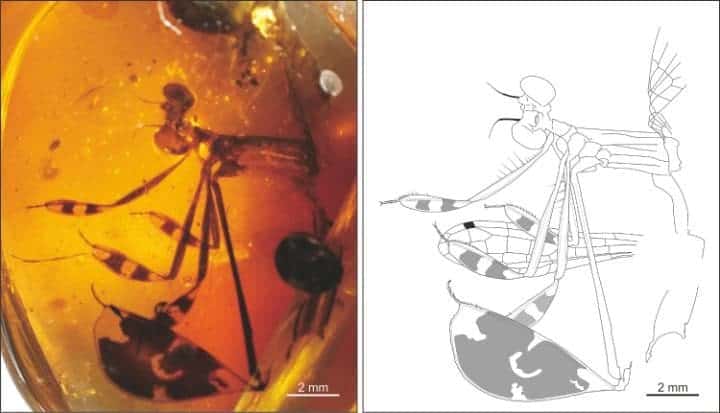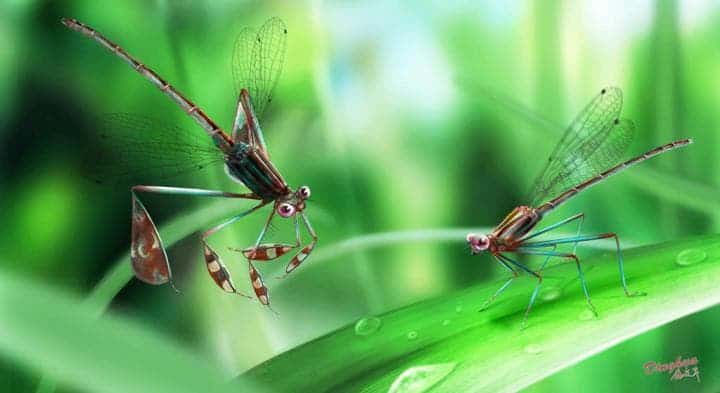It’s Romeo and Juliet on steroids, with geology.
We know a lot about the courtship of modern insects because we can observe them, but the rituals of ancient insects are pretty much a mystery — the fossil record almost never captures it… except this time, it did.
“Courtship behaviours, frequent among modern insects, have left extremely rare fossil traces. None are known previously for fossil (primitive winged insects),” said lead author Dr Daran Zheng.
Dr. Zhend Daran and Prof. Wang Bo from Nanjing Institute of Geology and Palaeontology, Chinese Academy of Sciences, have recently described a spectacular piece of amber dating from 100 million years ago. Inside it, it traps three male damselflies showing ancient courtship behavior, their legs beautifully extended to attract females and fend off other suitors.
The fossil features a new species researchers have called Yijenplatycnemis huangi, in the honor of Mr. Huang Yijen from Taiwan, who donated the specimen. It’s the oldest and one of the very few examples of fossils exhibiting this type of behavior, showing that courtship rituals go back to the time of the dinosaurs.

A damselfly was caught in the act of displaying to a female when he was trapped in amber. Image credits: Nanjing Institute of Geology and Paleontology.
Basically, what Y. huangi seems to do is spread its giant, well developed tibiae (legs), almost certainly to attract females and intimidate contenders. This is not an uncommon behavior today. A similar modern species, Platycypha caligata, also waves its six laterally enlarged tibiae at the females, but uses the posterior surface of the tibiae for intra-sexual signaling during territorial defense, something that the amber lovers don’t seem to do. Also, the tibiae of the modern species is not as well developed as that of the ancient ones. There are also some morphological differences. Aside from being larger, the tibiae of Y. huangi are nasymmetric and pod-shaped. While this would have made them more visible for females, it also made waving slower due to air friction. In other words, the modern species gave up sexiness for better flight speed.
Additionally, there is an eye-shaped spot in the middle of the hindleg, which researchers believe is used to intimidate vertebrate predators or protect the body by deflecting an attack to the wings. It’s also possible that these eye-spots emerged as yet another way to attract females. In case you haven’t figured it out by now, ancient damselflies were all about the ladies.
The fact that we can tell so much about a species that lived 100 million years ago is simply stunning. When these animals were trying to impress the ladies and were unfortunate enough to be trapped by amber, flowering plants were only starting to spread and dinosaurs were experiencing their most diverse period. T-Rex emerged 32 million years later.
Journal Reference: Daran Zheng, André Nel, Edmund A. Jarzembowski, Su-Chin Chang, Haichun Zhang, Fangyuan Xia, Haoying Liu & Bo Wang — Extreme adaptations for probable visual courtship behaviour in a Cretaceous dancing damselfly. doi:10.1038/srep44932










